As a homeowner, it’s essential to be aware of the different aspects of your home that require routine maintenance. One such element is your chimney. To keep your chimney in good working condition, it’s essential to follow the 3-2-10 chimney rule.
You’re probably familiar with this rule, but if you’re not, that’s what we will talk about today in this post. This standard for masonry chimneys has been in place for a long time. Hence, you may have encountered it while building your house or during a new roof installation.
What Is the 3-2-10 Chimney Rule?
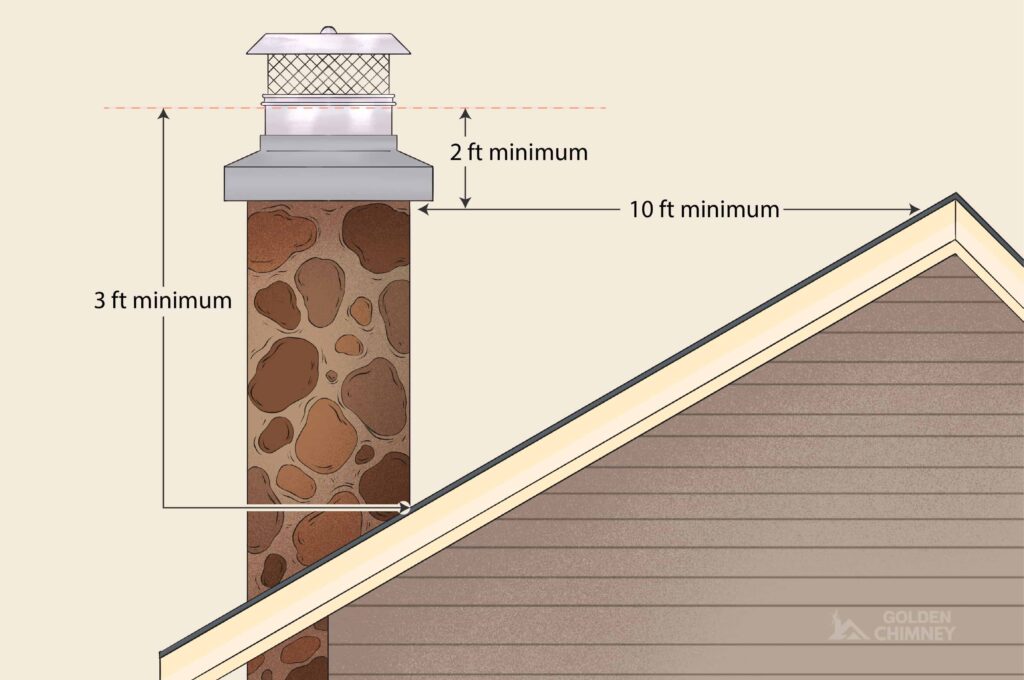
This rule means that your chimney’s shortest side must be at least 3 feet above the roof penetration. And its top must be 2 feet higher than any portion of the structure within 10 feet.
The requirements for chimney height above roof peak are just the basics of how big the chimney needs to be.
For example, if you’re hiring a contractor to replace an upper-story window and the chimney is too far away, you’ll need to compensate for that.
If they’re too close together, you could experience smoke blowing through your top-floor window whenever someone opens it.
How High Should a Chimney Be Above the Roof?
A chimney built of sticks and bricks should be 3 feet above the ceiling. Or a 2-foot height above any portion of the structure within 10’, whichever is higher. The tallest part of the structure for most tiny structures, such as tiny houses and cabins, is within 10 feet of the chimney code.
The chimney’s height above the roof line will vary depending on the roof’s pitch. For a structure with a flat or shallow pitched roof, the chimney must be 3 feet above the point where it crosses over the top of the building.
The chimney opening for a building with a steeply pitched roof must be at least 2′ above the roof’s highest point. Several factors influence the quality of a flue system’s draft, including the difference in air pressure between the firebox and the chimney opening.
The higher the altitude, the lower the air pressure. The taller the column of air, the harder it pulls on the air below it, creating a greater draft. Most traditional houses have a chimney that is at least 15 feet high.
Maximizing height is essential when building a tiny home, as most structures can’t support an extensive flue system.
Why Is Chimney Height Important?
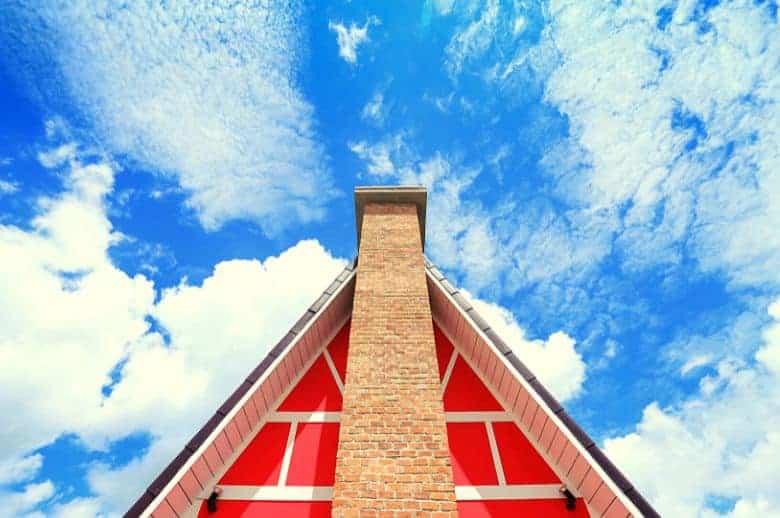
Chimney height is vital for several reasons. The first reason is that it helps to ensure that the chimney will draft properly. If the chimney is too short, it may not draft properly and could cause smoke to enter the home.
We explain more reasons why the chimney height is essential below:
Safety
Your chimney is built to safely vent the many by-products of combustion that result from heating your home with a wood stove, fireplace, or any other fuel-burning appliance. These combustion products are very hot, and as they rise up your chimney, they can create what is known as a “stack effect.”
The stack effect is created when the hot air rising up your chimney creates a draft that pulls cold air through home openings, such as doors and windows.
For your chimney to work correctly, it needs to be tall enough so that the draft it creates is strong enough to offset the stack effect. If your chimney is too short, the draft will not be strong enough, and it will not adequately ventilate your home. This can lead to a dangerous build-up of carbon monoxide in your home, which can be deadly.
——
Do You Need to Hire Chimney & Fireplace Expert?
Get free quotes from qualified experts near you. No commitment required!
——
Performance
Chimney height requirements are essential for your wood stove or fireplace performance. If your chimney is too short, it creates a weaker draft that won’t adequately vent the combustion by-products from your home.
This can lead to soot and creosote build-up inside your chimney, creating a fire hazard. It can also cause your appliance to operate less efficiently and produce more smoke.
Downdrafts Prevention Caused by Wind
Another reason to ensure your chimney is tall enough is to prevent downdrafts caused by wind. If your chimney is too short, the draft it creates can be easily offset by strong winds, which can cause smoke and combustion by-products to be blown back into your home. This can be very dangerous and is one of the leading causes of house fires.
The best way to avoid this problem is to ensure your chimney is at least two feet taller than any other part of your roof that protrudes above it. This will ensure that the draft it creates is stronger than the downdrafts caused by wind.
What Happens if Chimney is Not Tall Enough?

A tall chimney is essential if you want an effective fireplace. The taller the chimney, the better the draft will be. This is because hot air rises and will go up the chimney is tall. It will also help prevent smoke from coming back into the room.
If your chimney isn’t tall enough, your fireplace will be unable to operate correctly or safely. Because the column of ascending hot gases within your chimney will not be able to build a safe and sufficient draft, you’ll have to install a new flue.
A new flue is an expensive and disruptive addition to your home, so ensuring that your chimney adheres to the correct height specifications is essential. The minimum height for a safe and functional chimney is dictated by what’s known as the 3-2-10 rule.”
If your chimney doesn’t meet these requirements, you’ll need to take measures to bring it up to code. You can increase the height of your chimney in a few different ways, and one option is to extend the chimney stack up through the roof.
You can add new bricks or blocks to the existing structure or attach a metal flue extension to the top of the chimney. If you’re uncomfortable working with masonry or metal, you can hire a professional to do the work for you. Another option is to install a taller firebox.
This will require some significant renovations, but it will ultimately give you the extra height you need. Once again, hiring a professional is best if you’re not confident in your ability to complete the project yourself.
——
Do You Need to Hire Chimney & Fireplace Expert?
Get free quotes from qualified experts near you. No commitment required!
——
How to Determine Chimney Height?
The distance between the high side of the pipe, the high side’s peak, and your roof’s pitch determine the height of a chimney. The 3 2 10 chimney is the most popular method for calculating a relatively close approximation of how high your chimney should be.
This chimney height code is the set minimum height that your chimney must be above the highest point where it penetrates your roof. The code is based on the premise that a taller chimney will draft better and produce fewer hazardous fumes inside your home.
If you’re wondering how to determine chimney height for wood stove, the 3-2-10 rule also applied as a guideline.
It’s important to note, however, that many factors can affect how well a chimney drafts, including the type of fuel you’re burning, the design of your fireplace, and even the weather.
How Do You Measure the Height of a Chimney?
Now that you know the Chimney Rule, you might wonder how to measure your chimney. Luckily, it’s not as complicated as it may seem.
Here’s a step-by-step guide on measuring a chimney’s height.
Step 1
Find the highest point of the chimney. To do this, look for where the chimney meets the roofline. Once you’ve seen this spot, use a tape measure to determine the distance from the ground to this point.
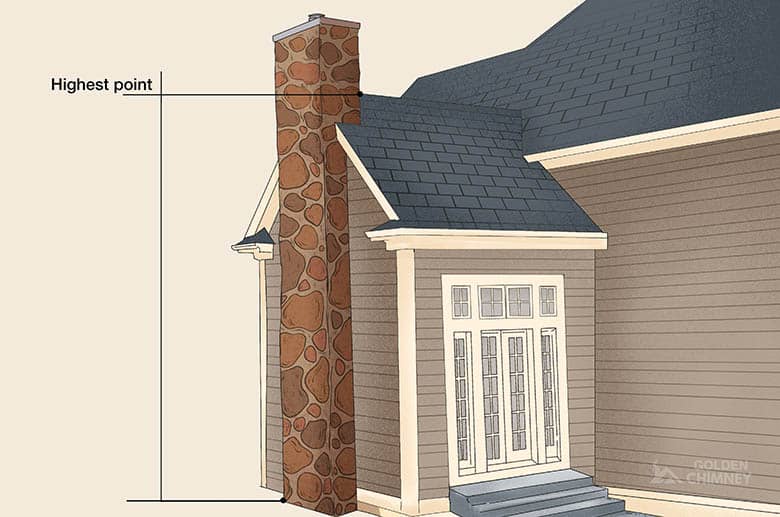
Step 2
Next, you’ll need to find the lowest point of the chimney. To do this, look for where the flue pipe meets the firebox.
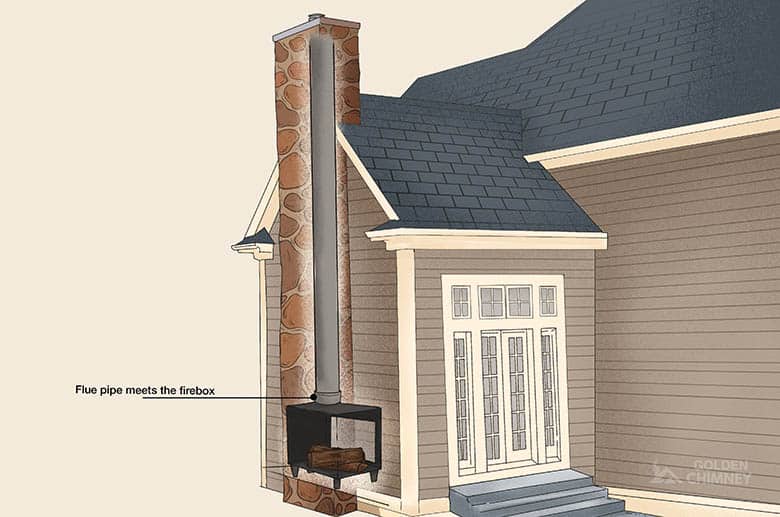
Step 3
Once you’ve found this spot, use a tape measure to determine the distance from the ground to this point.
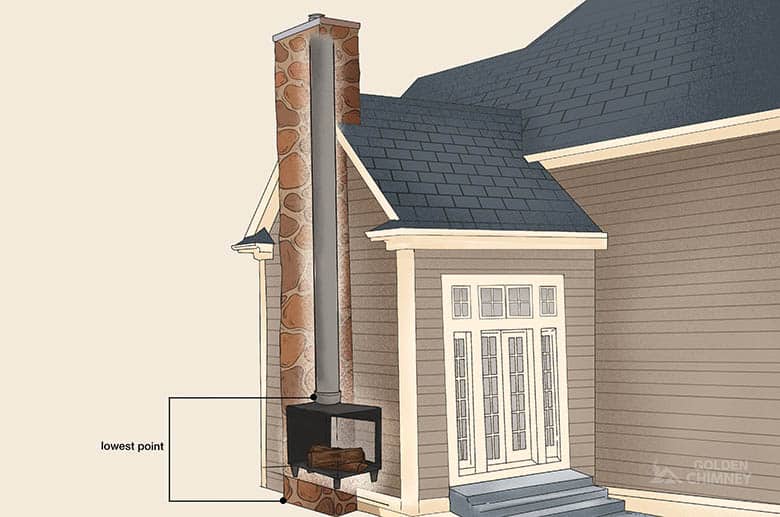
Step 4
Now that you have both of these measurements, you can calculate the chimney’s height. To do this, subtract the lowest point measurement from the highest point measurement, and the resulting number is the height of your chimney.
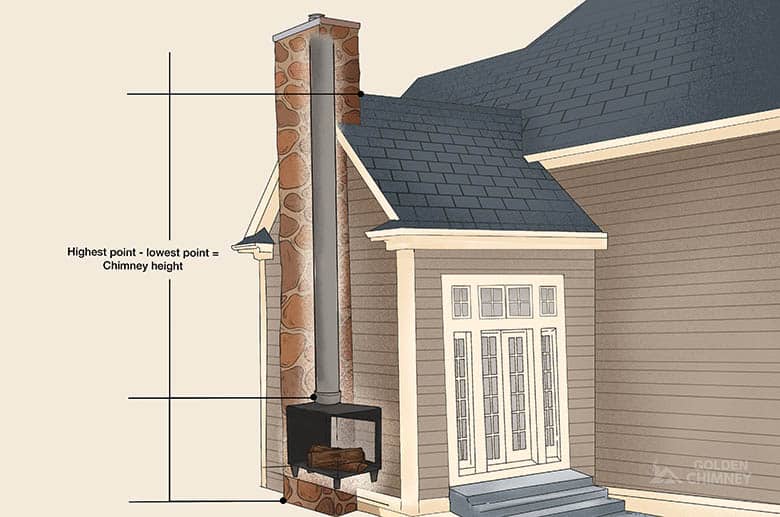
That’s all there is to it. Measuring the height of a chimney is a relatively simple process, and now that you know how to do it, you can be sure that your chimney meets all of the requirements of the chimney clearance code.
Conclusion
Overall, the 3 2 10 chimney rule is a great way to ensure your chimney is the right size for your home. By following this rule, you can be sure that your chimney will be able to handle the amount of heat and smoke produced by your fireplace.






